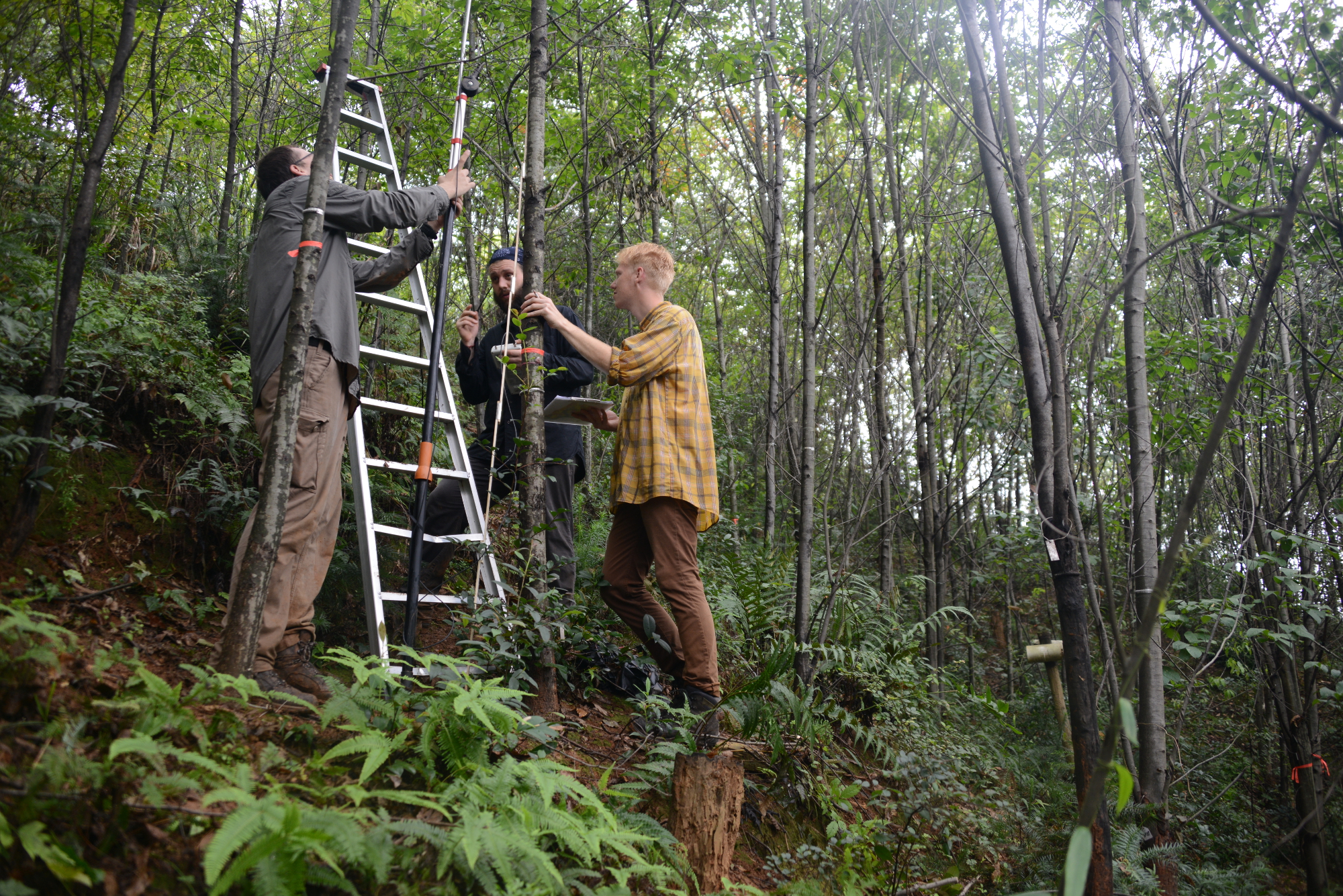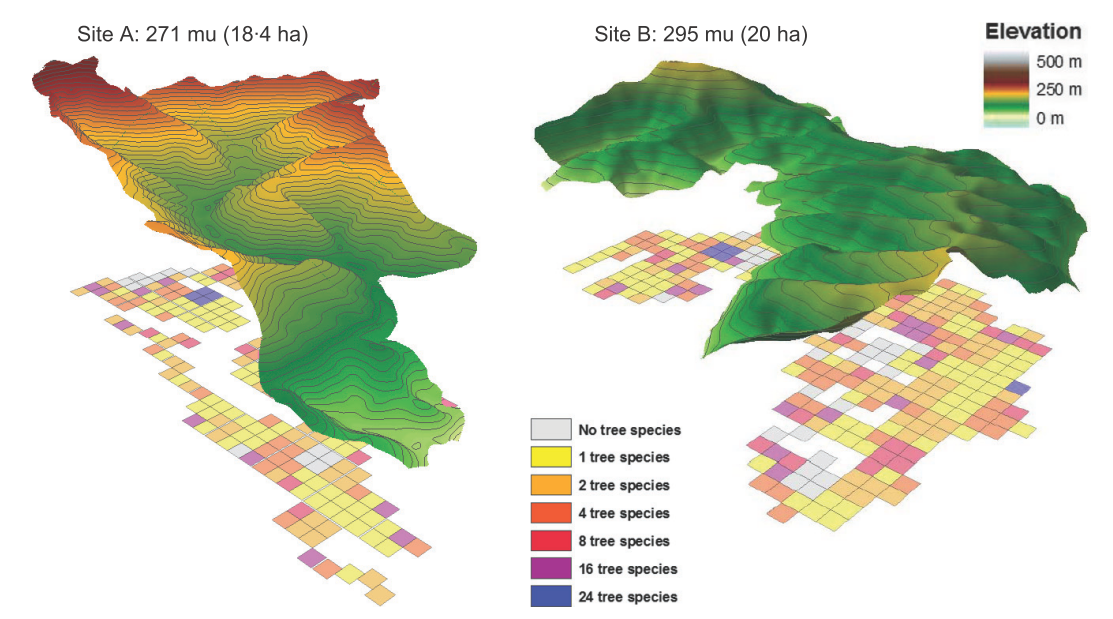About BEF-China
The Biodiversity Ecosystem Functioning Experiment China (BEF-China) is currently the largest BEF experiment with trees in terms of tree and species numbers worldwide. The experimental platform is located in the highly species-rich subtropics in China (Jiangxi Province) and has been jointly initiated by researchers from China, Germany and Switzerland in 2008. Established on a total area of 50 ha with more than 400,000 trees and shrubs planted, the experiment aims at determining the role of tree and shrub species diversity for multiple ecosystem functions including for example primary production, nutrient cycling and prevention of soil erosion. Complemented is the experimental platform by an observational study site consisting of 27 comparative study plots (CSPs) in the Qianjiangyuan National Park (Zhejiang Province).
Design
- Two sites (A and B), 5 km apart
- 40 native broad-leaved tree species, 18 shrub species, two commercial coniferous plantation species for monoculture comparisons (Cunninghamia lanceolata & Pinus massoniana).
- Six sets of 16 tree species each (set 1, 2 and 3 each at site A and B), with six levels of tree species richness (0, 1, 2, 4, 8, 16 species)
- Shrub diversity as a split-plot factor with four diversity levels (0, 2, 4, 8 species)
- Random & non-random extinction scenarios

